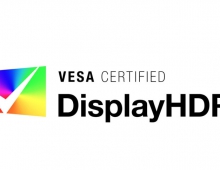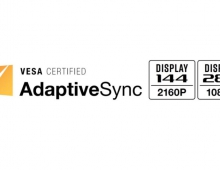
VESA Announces Plan to Develop New Digital Display Interface Standard
VESA announced the development of a new digital display interface specification for broad application within most forms of displays, including LCD, plasma, CRT and projection displays, as well as PCs and other sources of image content.
Known as DisplayPort(TM), the interface specification will accelerate the adoption of protected digital outputs on PCs to broadly support viewing of high definition and other types of protected content through an optional content protection capability, while enabling higher levels of display performance.
A group of industry leading companies, ATI Technologies (Nasdaq:ATYT), Dell Inc., Genesis Microchip (Nasdaq:GNSS), Hewlett-Packard (NYSE:HPQ), Molex Incorporated (Nasdaq:MOLX), NVIDIA (Nasdaq:NVDA), Royal Philips Electronics (NYSE:PHG), Samsung Electronics, and Tyco Electronics (NYSE:TYC) are close to completing the development of a detailed proposal. It is the goal of this group to submit a comprehensive version of the DisplayPort interface proposal to VESA in the third quarter of 2005. Pending ratification and adoption by VESA, the group intends that the DisplayPort interface standard be available to the industry as an open, extensible standard. Administration by VESA, a recognized industry standards organization, will ensure that the specification is maintained and will provide a forum for future standard revisions.
"The member companies of VESA have worked exceptionally well together over many years to develop a significant and important set of standards for the industry, and we will approach this new proposal with the same high level of energy and expertise," said Ian Miller, chairman, VESA.
The standard will be designed to enable a common interface approach across both internal and external display connections. Internal connections include display interfaces within a notebook PC or within an LCD display. External display connections include the interface between a source device such as a desktop PC, set-top box, DVD player or game console, and a display device such as a direct view flat panel or projection display for viewing video and graphics. The DisplayPort standard will also include an optional digital audio capability allowing streaming of high definition digital audio-video content over the interface, and provides performance scalability to enable the next generation of displays featuring higher color depths, refresh rates, and display resolutions.
The DisplayPort standard will feature a small, user-friendly connector that is optimized for use on thin profile notebooks in addition to allowing multiple connectors on a graphics card.
General Overview
The DisplayPort standard will provide a high-quality digital interface for video and audio content with optional secure content protection, in a highly extensible format. This will enable a wide range of source and display devices to be simply and securely connected.
The PC industry needs a ubiquitous digital interface with optional content protection that may be deployed widely at minimum cost to enable broad access to premium content. The DisplayPort standard addresses this need by providing an optional secure method to protect both image and audio content.
The DisplayPort standard is designed to be usable in all digital source display connections, whether these connections are embedded within a device, such as a notebook PC, or via an external cable between a source device and a display device.
As higher performance display and source technologies are introduced, the demands on interface bandwidth expand significantly. This problem will become even more acute in the future with demands for more colors, higher resolutions, and higher refresh rates. The DisplayPort standard will have a high initial bandwidth and is designed to scale to even higher bandwidths to accommodate future display requirements.
Delivering audio to a multi-media monitor has generally been provided by a dedicated cable, increasing cost and desktop clutter. With the introduction of the DisplayPort standard, high-quality audio will be available to the display device over the same cable as the video signal.
The display connectors used today by the computer industry are relatively large, leading to a conflict with the trend towards small, slim form factors. The DisplayPort standard recognizes this problem and will introduce a small connector that is simple to use. This makes display connections to all source and display devices easier to implement, reducing constraints on the industrial design for a wide range of products. Small portable devices such as notebook PCs will find this to be a significant benefit.
About VESA
The Video Electronics Standards Association is a worldwide organization with more than 120 member companies that promotes and develops timely, relevant, open display and display interface standards, ensuring interoperability, and encouraging innovation and market growth. For more information, visit www.vesa.org.
A group of industry leading companies, ATI Technologies (Nasdaq:ATYT), Dell Inc., Genesis Microchip (Nasdaq:GNSS), Hewlett-Packard (NYSE:HPQ), Molex Incorporated (Nasdaq:MOLX), NVIDIA (Nasdaq:NVDA), Royal Philips Electronics (NYSE:PHG), Samsung Electronics, and Tyco Electronics (NYSE:TYC) are close to completing the development of a detailed proposal. It is the goal of this group to submit a comprehensive version of the DisplayPort interface proposal to VESA in the third quarter of 2005. Pending ratification and adoption by VESA, the group intends that the DisplayPort interface standard be available to the industry as an open, extensible standard. Administration by VESA, a recognized industry standards organization, will ensure that the specification is maintained and will provide a forum for future standard revisions.
"The member companies of VESA have worked exceptionally well together over many years to develop a significant and important set of standards for the industry, and we will approach this new proposal with the same high level of energy and expertise," said Ian Miller, chairman, VESA.
The standard will be designed to enable a common interface approach across both internal and external display connections. Internal connections include display interfaces within a notebook PC or within an LCD display. External display connections include the interface between a source device such as a desktop PC, set-top box, DVD player or game console, and a display device such as a direct view flat panel or projection display for viewing video and graphics. The DisplayPort standard will also include an optional digital audio capability allowing streaming of high definition digital audio-video content over the interface, and provides performance scalability to enable the next generation of displays featuring higher color depths, refresh rates, and display resolutions.
The DisplayPort standard will feature a small, user-friendly connector that is optimized for use on thin profile notebooks in addition to allowing multiple connectors on a graphics card.
General Overview
The DisplayPort standard will provide a high-quality digital interface for video and audio content with optional secure content protection, in a highly extensible format. This will enable a wide range of source and display devices to be simply and securely connected.
The PC industry needs a ubiquitous digital interface with optional content protection that may be deployed widely at minimum cost to enable broad access to premium content. The DisplayPort standard addresses this need by providing an optional secure method to protect both image and audio content.
The DisplayPort standard is designed to be usable in all digital source display connections, whether these connections are embedded within a device, such as a notebook PC, or via an external cable between a source device and a display device.
As higher performance display and source technologies are introduced, the demands on interface bandwidth expand significantly. This problem will become even more acute in the future with demands for more colors, higher resolutions, and higher refresh rates. The DisplayPort standard will have a high initial bandwidth and is designed to scale to even higher bandwidths to accommodate future display requirements.
Delivering audio to a multi-media monitor has generally been provided by a dedicated cable, increasing cost and desktop clutter. With the introduction of the DisplayPort standard, high-quality audio will be available to the display device over the same cable as the video signal.
The display connectors used today by the computer industry are relatively large, leading to a conflict with the trend towards small, slim form factors. The DisplayPort standard recognizes this problem and will introduce a small connector that is simple to use. This makes display connections to all source and display devices easier to implement, reducing constraints on the industrial design for a wide range of products. Small portable devices such as notebook PCs will find this to be a significant benefit.
About VESA
The Video Electronics Standards Association is a worldwide organization with more than 120 member companies that promotes and develops timely, relevant, open display and display interface standards, ensuring interoperability, and encouraging innovation and market growth. For more information, visit www.vesa.org.





















